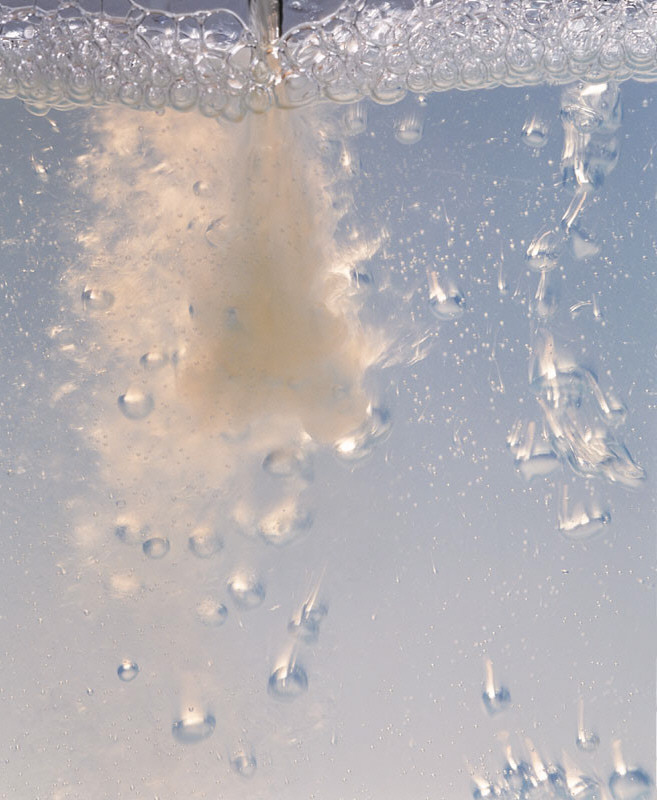How Anti-Foam Control Solutions Enhance Item Top Quality and Effectiveness
The role of anti-foam control services in industrial procedures can not be overstated, as they are critical in improving both product high quality and operational effectiveness. By properly mitigating foam development, these remedies not only make sure regular item appearance across numerous sectors but also minimize the threat of contamination, which is essential for maintaining high purity standards.
Comprehending Foam Formation
Foam formation is an usual sensation run into in different industrial processes, typically resulting from the interaction of fluids with solids or gases. This phenomenon occurs because of the stablizing of gas bubbles within a liquid matrix, leading to the production of a foamy layer on the surface. The presence of surfactants, which reduce the surface stress of fluids, can intensify foam formation by facilitating bubble development and stabilization.
Several variables influence foam development, consisting of the nature of the liquid, the presence of contaminations, temperature, and frustration degrees. For circumstances, high shear forces throughout mixing can introduce extra air right into the liquid, promoting bubble formation. In addition, hydrophobic and hydrophilic substances can connect with liquid surface areas, affecting bubble security.
Comprehending the systems of foam development is vital for industries such as food handling, pharmaceuticals, and petrochemicals, where foam can impede production effectiveness and alter item quality. Recognizing the particular problems that result in foam generation permits for much better design and control of processes, inevitably resulting in enhanced functional outcomes. Identifying these basic facets of foam development establishes the stage for checking out reliable solutions to alleviate its damaging effects in commercial applications.

Significance of Anti-Foam Solutions
While foam formation can boost specific procedures, its unexpected existence frequently brings about considerable operational obstacles across numerous industries. The buildup of foam can block equipment, reduce effectiveness, and complicate manufacturing processes. In manufacturing, for instance, extreme foam can impede the accurate measurement of fluids, resulting in incongruities in product solution. In wastewater treatment, foam can conflict with aeration procedures, negatively affecting the therapy efficacy.

The significance of anti-foam options prolongs past functional effectiveness; they additionally play a vital duty in keeping safety and security criteria. In sectors such as food and drink handling, where health is extremely important, regulating foam can protect against contamination threats linked with overflow and splilling.
Advantages to Item Quality
Effective anti-foam solutions significantly enhance item top quality throughout different markets by guaranteeing regular solution and stopping the introduction of pollutants. The presence of foam throughout manufacturing processes can lead to variability in item characteristics, which ultimately influences completion user's experience. By mitigating foam development, these options help with consistent blending and diffusion of active ingredients, leading to a product that fulfills rigid quality criteria.
Additionally, anti-foam agents aid maintain optimum viscosity and texture, which are vital for products such as layers, food, and drugs. Anti-Foam Control Solutions. A stable solution is not only aesthetically enticing but additionally functionally exceptional, ensuring that items perform as planned. Additionally, the reduction of foam minimizes the threat of contamination, as caught air can present undesirable bacteria or international fragments that jeopardize item stability
In applications like fermentation or chemical reactions, effective anti-foam options support optimal yield and item uniformity, which are essential for keeping brand name online reputation and customer contentment. By prioritizing item quality, manufacturers can promote count on and commitment among customers, eventually adding to long-lasting success in the industry.
Enhancing Operational Performance
A considerable decrease in foam can result in improved operational effectiveness in producing procedures throughout numerous markets. When foam is decreased, it permits smoother procedures, consequently minimizing downtime connected with foam-related issues. Extreme foam can cause overflow, interfere with equipment functionality, and require constant maintenance interventions, all of which add to inefficiencies and boosted operational costs.
By carrying out reliable anti-foam control solutions, manufacturers can simplify their procedures, causing improved throughput and performance. The see post reduction of foam helps with far better mixing and response times in chemical processes, which is critical in markets such as food manufacturing, drugs, and wastewater treatment. With a much more secure procedure environment, producers can achieve extra consistent product outcome, thus boosting general functional dependability.
Additionally, enhanced functional efficiency can cause financial savings in raw materials and energy consumption. When foam is regulated successfully, resources are utilized extra efficiently, resulting in a reduction in waste and operational prices. Companies are better placed to fulfill production targets and react to market needs swiftly, inevitably adding to a stronger competitive advantage in the market.
Choosing the Right Anti-Foam Representative
Picking the suitable anti-foam representative is crucial for maintaining the functional effectiveness acquired through effective foam control. The selection of representative can dramatically influence both the efficiency read of the process and the quality of the final item. Aspects such as the nature of the foam, the processing environment, and the specific application has to be taken into consideration to make certain optimum results.
Anti-foam agents can be classified into two key types: silicone-based and non-silicone-based. Silicone representatives are understood for their superior performance in high-shear and high-temperature applications, while non-silicone agents might be liked in industries such as food and beverage due to regulative considerations. It is vital to evaluate the compatibility of the anti-foam agent with the products and processes involved.
Furthermore, the concentration of the anti-foam representative plays a critical function; too much use can lead to unfavorable impacts on product top quality, while inadequate quantities may fall short to manage This Site foam sufficiently. Performing extensive screening and pilot trials can assist identify the most ideal anti-foam agent for a certain application, inevitably improving both item quality and operational performance.
Conclusion
To conclude, anti-foam control services play a critical role in boosting product high quality and functional efficiency across different sectors. Anti-Foam Control Solutions. By minimizing foam formation, these options make certain consistent mixing and item appearance while mitigating contamination risks. The resultant smoother processes add to minimized downtime and raised throughput, thereby optimizing source usage and boosting general production targets. The choice of ideal anti-foam representatives further amplifies these benefits, enhancing their importance in industrial applications.
By efficiently mitigating foam development, these services not only make sure consistent item appearance across numerous fields yet likewise lessen the risk of contamination, which is important for maintaining high purity standards.Recognizing the systems of foam formation is essential for industries such as food handling, pharmaceuticals, and petrochemicals, where foam can hinder manufacturing effectiveness and alter item top quality. The visibility of foam throughout production procedures can lead to irregularity in product features, which eventually affects the end customer's experience. By minimizing foam formation, these services promote uniform mixing and dispersion of active ingredients, resulting in a product that fulfills strict quality criteria.
Choosing the ideal anti-foam agent is essential for maintaining the functional effectiveness gained with effective foam control.
Comments on “Anti-Foam Control Solutions-- Industrial Anti-Foam Solutions for Improved Performance”